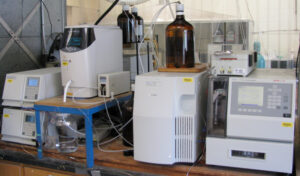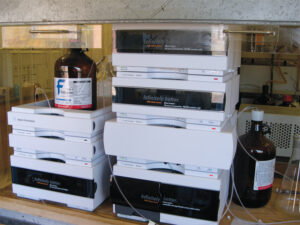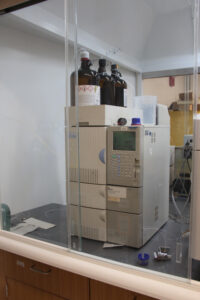
Molecular Weight
Location
Campus Address
Mailing Address
25 King Hill Road, Unit 3136
Storrs CT 06269-3136
Instrumentation

Waters GPC-1 (1515 HPLC Pump and Waters 717Plus Autoinjector)
Gel permeation chromatography utilizes the stationary phase pore volume to separate molecules of differing molecular weights. A larger molecule that’s unable to reside in the pore will spend more time in the mobile phase while the smaller molecules reside more in the stationary phase. Elution volumes are calibrated against molecular weight standards, polystyrene or poly(methylmethacrylate).

Agilent 1260 Infinity GPC (System II)
Gel permeation chromatography utilizes the stationary phase pore volume to separate molecules of differing molecular weights. A larger molecule that’s unable to reside in the pore will spend more time in the mobile phase while the smaller molecules reside more in the stationary phase. Elution volumes are calibrated against molecular weight standards, polystyrene or poly(methylmethacrylate).

Shimadzu Liquid Chromatography System
Gel permeation chromatography utilizes the stationary phase pore volume to separate molecules of differing molecular weights. A larger molecule that’s unable to reside in the pore will spend more time in the mobile phase while the smaller molecules reside more in the stationary phase. Elution volumes are calibrated against molecular weight standards, polystyrene or poly(methylmethacrylate).